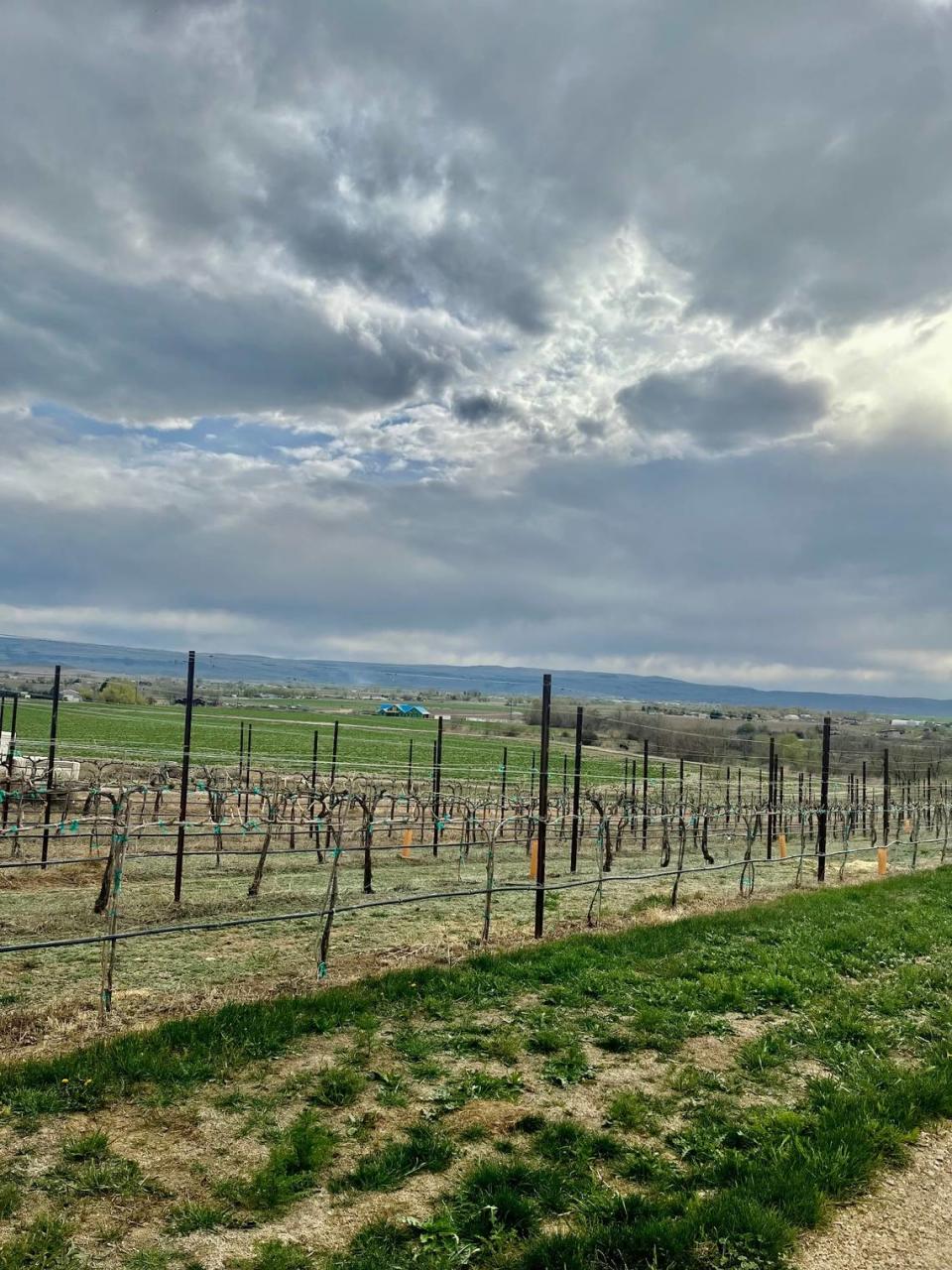Vineyards never ‘out of the clear for Mother Nature.’ What have spring cold, snow meant?
Idaho has had an unusual spring weather-wise — snow on May 9, very cold temperatures — and it made its way to vineyards throughout the state.
The week of May 8-14, there was an average high temperature of 59.6 degrees, which is 11 degrees colder than average temperatures for those dates. Freezing temperatures were common throughout April.
While this might mean extra blankets and winter jackets for Idahoans, and covers for plants and gardens at home, Idaho vineyards are less protected from Mother Nature’s extremities.
“When you get to this point where you have growth, I mean, you kind of run out of options,” said Jake Cragin, a commissioner on the Idaho Wine Commission.
Cragin works with Skyline Vineyards and Sawtooth Winery, both in Canyon County, and they were impacted by the cold weather. The snow on May 9 was one thing, but the low temperatures this late into spring caused damage to some of the vines, he said.
“I can tell you that this spring that we’re having right now is very cold compared to ... even last year, so what we’re seeing in the vineyard is really sporadic bud break,” Cragin told the Idaho Statesman in a phone interview. “It’s really delaying growth and, you know, we need some heat to kind of even things out.”
The good news is that the abnormal spring should not be a disruption to production — as long as the rest of May is OK.
“I think we got lucky,” Cragin said. “You know, we passed through this by the skin of our teeth. I don’t think that the consumers are going to see any decrease in Idaho of wine so far this year.”
An April 12 snowfall caused some bud breaks to Sawtooth vines, specifically with chardonnay, which buds early, Cragin said. Skyline Vineyards, which were a week behind in growth, were perfectly healthy at that time, he said.
The timeline of vine growth can determine how vulnerable it is to the cold. The longer that flowering and pruning can be delayed, the more likely bud breaks can be avoided, according to experts.

That was the case for Kindred Vineyards along the Sunnyslope Wine Trail south of Caldwell.
“The buds on the plants had not blossomed … so (the leaves) were still in the plant,” Craig Davis, founder of Kindred Vineyards, told the Statesman in a phone interview. “So they were protected by the trunk even though the temperatures reached down to 31 (degrees). From what I can tell, there’s no visible damage.”
Davis said the only damage to his vineyard came from small burns on the edges of the leaves, which would not be enough to affect production.
However, were the cold in Idaho to continue through May, vineyards likely would see damage to production, Cragin said.
“Just talking to all the other farmers out here, I think we were expecting the worst and it actually didn’t end up being as bad for us,” Cragin said. “If we get another flash freeze like we got (in April), we will be in trouble.”
According to Davis, something similar happened in 2015, when a freeze hit in spring during the time when cherries were blossoming, resulting in multiple cherry orchards closing for that year.
Southwest Idaho saw low temperatures near or below freezing for nine days in a row, April 9-17, according to National Weather Service charts. It was as cold as 34 on April 29.
Then on May 8-9 came a snowstorm, frost and freezing temperatures.
For the time being, there is minimal concern that the rest of the spring weather will be damaging to vineyards, according to Cragin.
Many vineyards have wind machines to help protect vines from freezing temperatures by pushing warm air to the ground. Additionally, Idaho’s unique microclimates mean weather conditions can vary greatly by location.
“We have a very special microclimate here, that actually is the only place around where we can grow grapes and be protected from things like the weather,” Davis said.
Once the cold is over, vineyards will still have to deal with the state’s dry weather, which brings about its own set of challenges.
“You know, last year was a really, really hot season and that definitely reduced our yield. So if this season ends up being a really, really, really hot season, that can reduce your yields as well,” Cragin said. “I think we’re in the clear for any frost damage and any more cold spells, but we’re never out of the clear for Mother Nature.”

